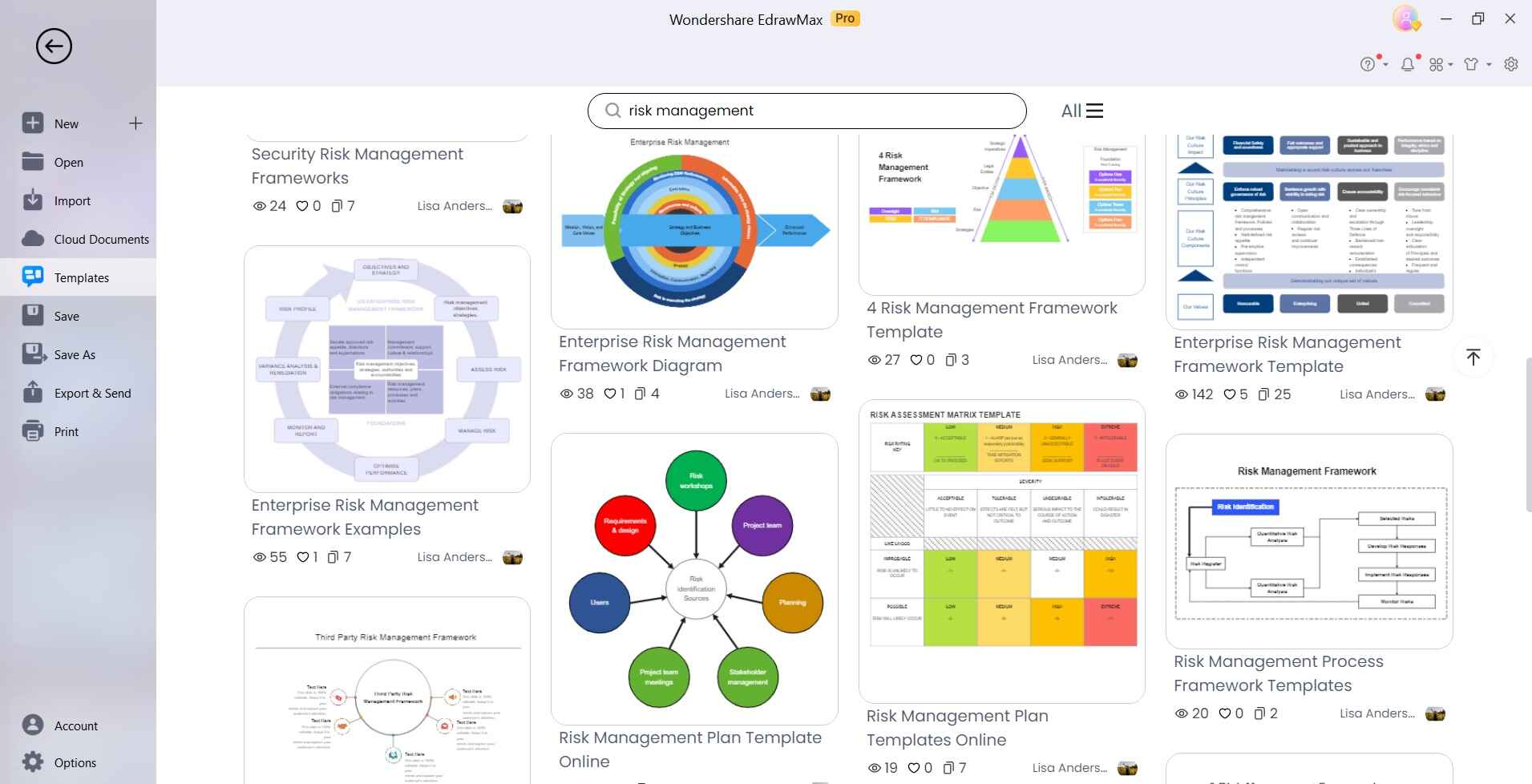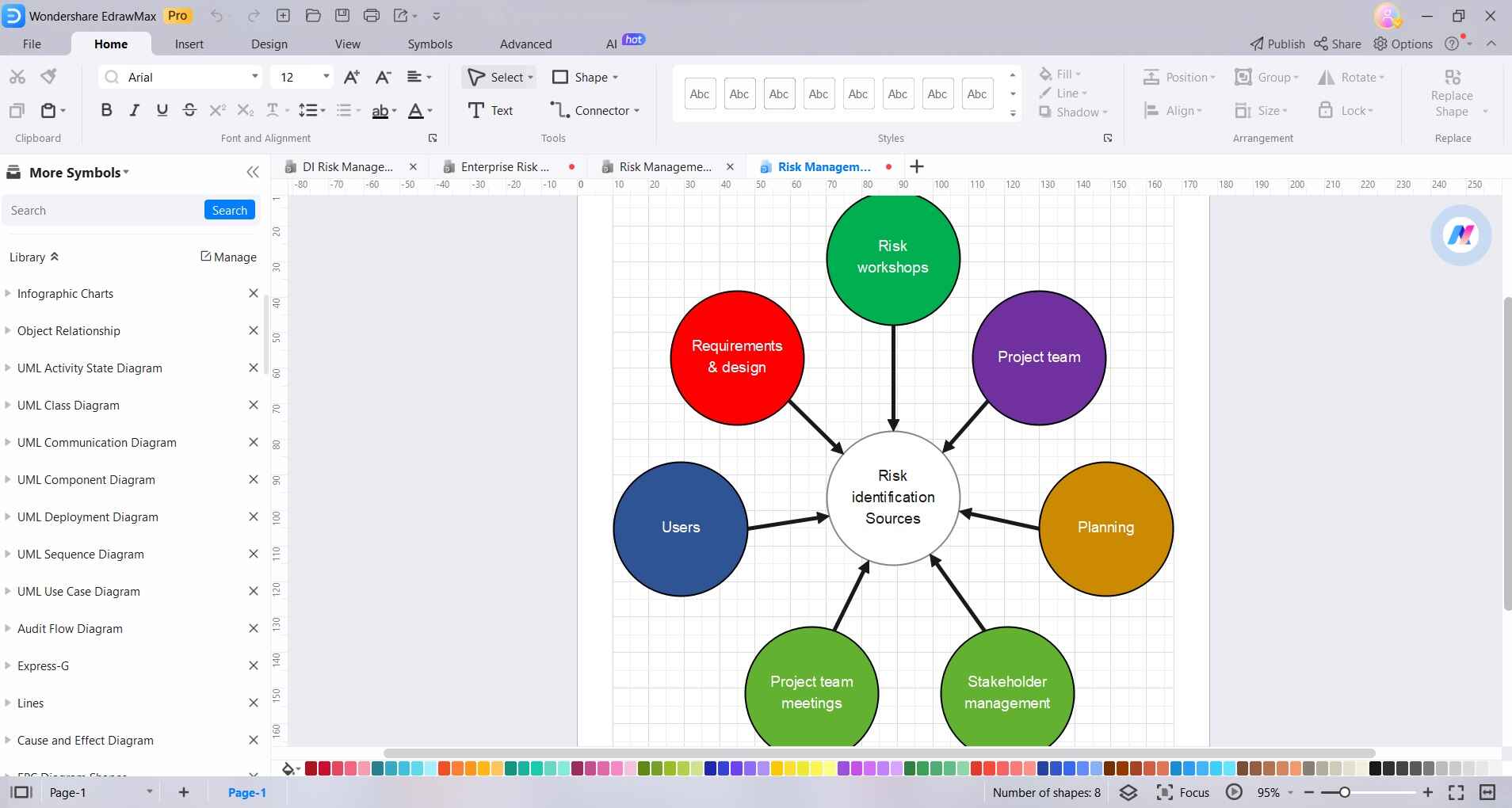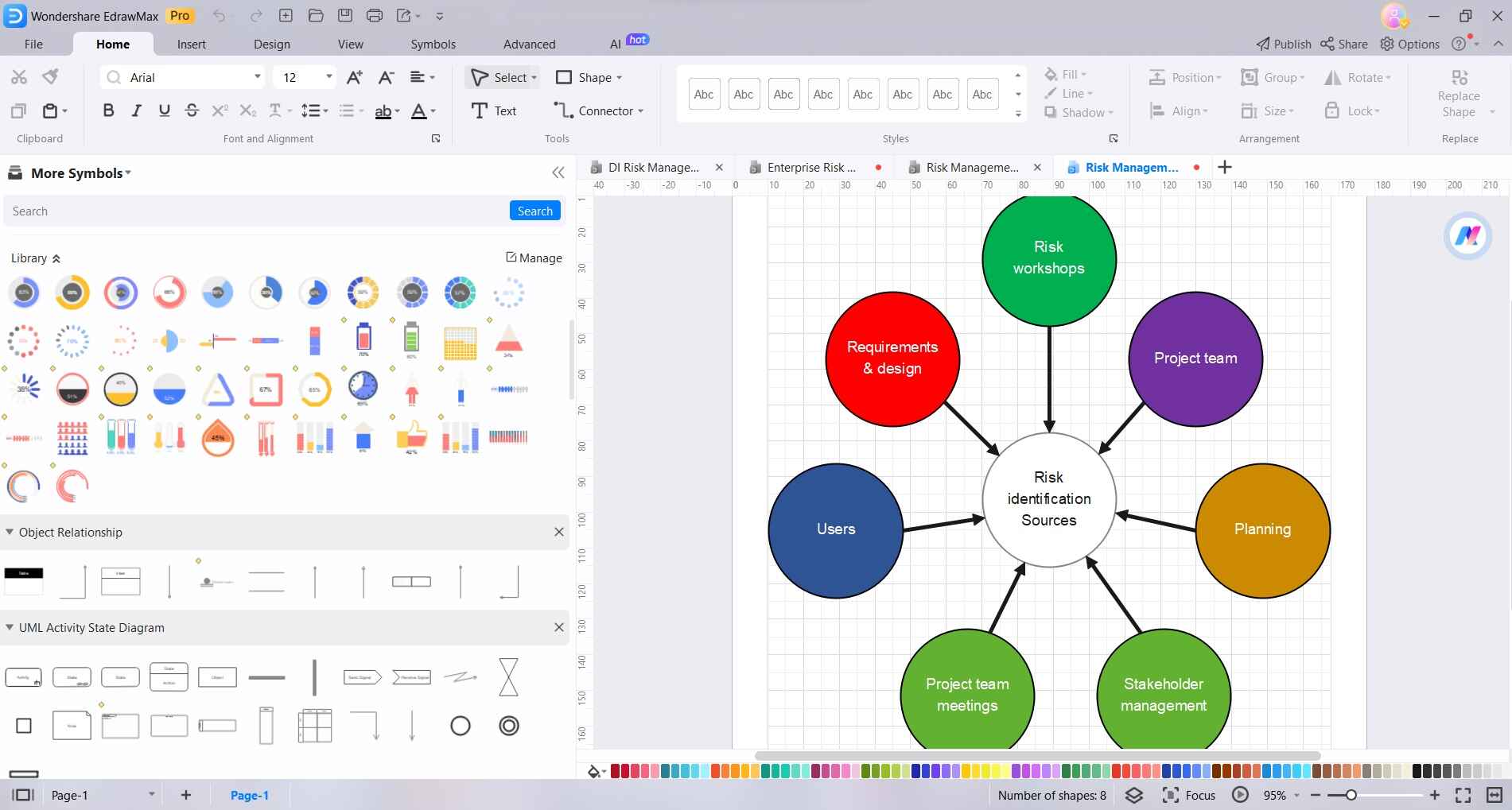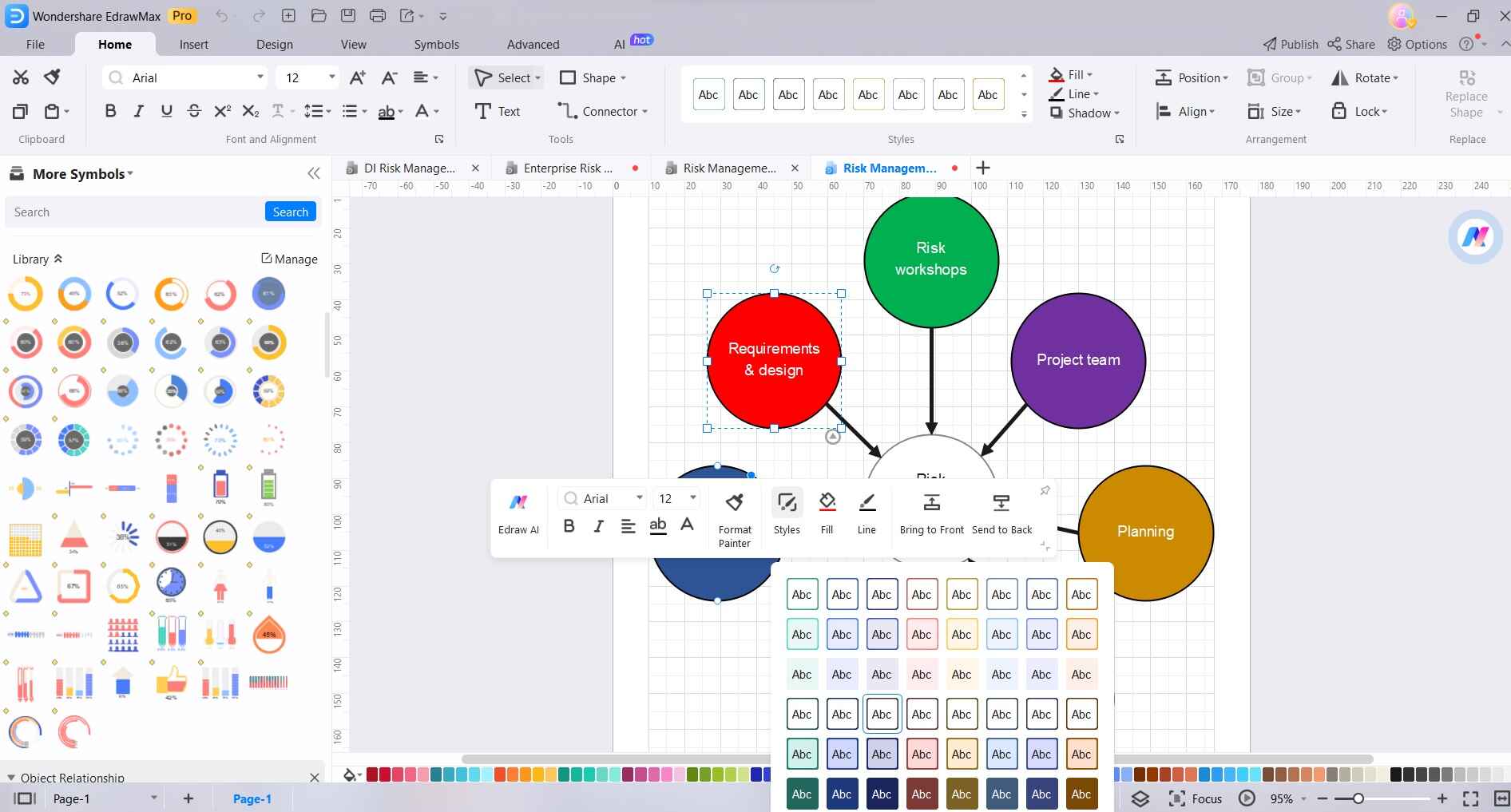In today's interconnected business landscape, 3rd Party Risk Management (TPRM) is paramount. It involves identifying, evaluating, and mitigating potential risks associated with external partners, suppliers, or vendors. Neglecting TPRM can expose organizations to a range of threats, from data breaches to operational disruptions. This comprehensive approach not only safeguards sensitive information but also fortifies the overall resilience of your business.
Discover the essential strategies and best practices to effectively implement 3rd party risk assessment and ensure the security and continuity of your operations.
In this article
- What is 3rd Party Risk Management (TPRM)
- Difference Between a Third-Party and a Fourth-Party Risk Management
- Why is Third-Party Risk Management Important For Businesses
- What Types of Risks Do Third Parties Introduce?
- Create a 3rd party risk management framework easily using EdrawMax
- What are the Top TPRM Best Practices?
- Conclusion
Part 1: What is 3rd Party Risk Management (TPRM)
Third-Party Risk Management (TPRM) is the process of identifying and mitigating potential risks that can arise from external parties like suppliers, vendors, or partners. It's crucial in today's business world, where companies often rely on a network of connections. TPRM helps ensure that these external relationships don't compromise security or disrupt operations.
By evaluating and managing these risks, businesses can protect sensitive information and maintain smooth, secure operations. It's an essential practice for any organization looking to safeguard its interests in a collaborative environment.
Part 2: Difference Between a Third-Party and a Fourth-Party Risk Management
Third-party risk management (TPRM) involves assessing and mitigating risks associated with external vendors, suppliers, and partners. On the other hand, fourth-party risk management (FPRM) goes a step further by examining the risks associated with the subcontractors and service providers of those third parties.
Essentially, while TPRM focuses on immediate connections, FPRM delves deeper into the extended network. Effectively managing both third and fourth-party risks is crucial for comprehensive risk mitigation in today's interconnected business landscape.
Part 3: Why is Third-Party Risk Management Important For Businesses
In today's interconnected business landscape, Third-Party Risk Management (TPRM) plays a critical role in safeguarding the interests and integrity of organizations. Here's why it's indispensable for businesses:
- Protects Sensitive Data: TPRM ensures that external partners handle sensitive information securely, preventing data breaches and safeguarding business reputation.
- Ensures Regulatory Compliance: Many industries have strict compliance requirements. TPRM helps businesses meet these standards by ensuring vendors adhere to necessary regulations.
- Maintains Business Continuity: Assessing third-party risks helps identify potential disruptions, allowing for proactive measures to keep operations running smoothly.
- Preserve Reputation and Trust: Effective TPRM demonstrates a commitment to security and reliability, instilling confidence in customers, partners, and stakeholders.
Part 4: What Types of Risks Do Third Parties Introduce?
In the complex web of business relationships, third-party involvement brings its own set of potential risks. Here are the types of risks that third parties can introduce:
- Cybersecurity Risks: Weak security measures within third-party systems can lead to data breaches, exposing sensitive information.
- Compliance and Regulatory Risks: Non-compliance with industry-specific regulations or legal requirements can result in fines or legal consequences for both parties.
- Operational Risks: Third-party service failures or disruptions can directly impact a company's operations, leading to downtime or delays.
- Reputational Risks: Misconduct or subpar performance by a third party can tarnish a company's reputation and erode trust with stakeholders.
- Financial Risks: Issues like contract disputes or the financial instability of a third party can have financial implications for the contracting company.
Part 5: Create a 3rd party risk management framework easily using EdrawMax
Creating a 3rd Party Risk Management (TPRM) framework with EdrawMax is essential for its user-friendly features and robust capabilities. The platform streamlines the process, offering intuitive tools and templates that guide users through the creation of a comprehensive TPRM framework. Its visual interface provides a clear representation of processes, relationships, and responsibilities, enhancing understanding and communication within the organization.
EdrawMax's customization options allow businesses to adapt the framework to their specific requirements, ensuring it aligns seamlessly with industry standards and the company's organizational structure.
Here are the steps to create a 3rd party risk management framework using EdrawMax:
Step1
Open EdrawMax on your computer. Browse through the available templates and select a suitable framework template. Look for options related to risk management or governance frameworks.

Step2
Once the template is selected, start customizing it to align with your organization's specific needs. Add or modify elements like categories, subcategories, and risk assessment criteria.

Step3
Clearly label each section and element of the framework to ensure clarity and understanding. Add annotations or descriptions to provide context or additional information where necessary.

Step4
Use EdrawMax's formatting tools to enhance the visual appeal and clarity of the TPRM framework. Apply consistent color schemes, font styles, and formatting options to ensure a professional and cohesive look. This step not only improves aesthetics but also aids in conveying information effectively to stakeholders.

Step5
Once satisfied with the framework, save it in a compatible format (e.g., PDF, PNG) and distribute it to relevant stakeholders for feedback or implementation.

By following these steps, you can leverage EdrawMax's powerful features to create a comprehensive and tailored 3rd Party Risk Management framework for your organization.
Part 6: What are the Top TPRM Best Practices?
Implementing effective Third-Party Risk Management (TPRM) requires a set of well-defined best practices. Here are the top recommendations to consider:
- Robust Vendor Selection: Thoroughly vet and select vendors based on their security measures, compliance records, and reputation.
- Continuous Monitoring: Regularly assess third-party performance, security protocols, and adherence to contractual agreements.
- Clear Contractual Agreements: Ensure contracts outline expectations, security requirements, compliance standards, and incident response protocols.
- Risk-Based Prioritization: Prioritize third parties based on their level of risk exposure and potential impact on the business.
- Incident Response Planning: Have a well-defined plan in place for addressing and mitigating risks and breaches involving third parties.
Conclusion
In today's business world, understanding 3rd party risk management and managing risks from outside partners is really important. EdrawMax makes it easy to create a plan for this. It's user-friendly and you can make it fit your needs. Just follow the steps and keep it updated. This plan helps keep important info safe and builds trust with partners. EdrawMax is a great tool for protecting your business in today's ever-changing world.




